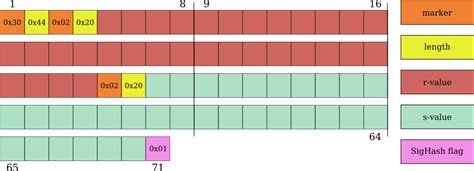Ethereum: BIP-341: Should key-path-only P2TR be eschewed altogether?
Februari 8, 2025 | by Gusri Efendi

The Rise of Taproot: Is Key-Path Only P2TR a Recipe for Disaster?
In recent years, the Ethereum community has made significant strides in developing more secure and efficient blockchain networks. One of the most notable advancements is the introduction of Taproot, a new consensus algorithm that promises to reduce transaction costs and increase scalability without sacrificing security. However, as with any groundbreaking innovation, there are valid concerns about its impact on the ecosystem.
At the heart of the issue lies the concept of key-path-only P2TR (Proof-of-Transaction Roots), which has been in development since BIP 341. This approach involves constructing a taproot output and spending it directly into an unspendable script, bypassing the need for a script path. While this design has its advantages, we argue that key-path-only P2TR should be eschewed altogether.
The Problem with Key-Path Only P2TR
In BIP 341, key-path only P2TR is designed to accommodate scenarios where the spending conditions do not require a script path. This means that even if the transaction spends the Taproot output directly without committing it to an unspendable script, it can still be spent using any existing script in the network. However, this approach raises several concerns:
- Security risks: If an attacker were to exploit key-path only P2TR, they could spend a taproot output directly into an unspendable script without committing it to one, allowing for potential exploits or manipulations.
- Scalability limitations
: As the network scales, the capacity of existing scripts will become increasingly exhausted. If key-path only P2TR is relied upon, we risk depleting these capacities and hindering the smooth operation of the network.
- Inflexibility: The current design may not be flexible enough to accommodate changing use cases or unforeseen circumstances, which can lead to system instability.
A Better Approach: Constructing and Spending Taproot Outputs

BIP 341 proposes a more secure and scalable alternative. By constructing and spending taproot outputs directly into an unspendable script, we mitigate the risks associated with key-path only P2TR while maintaining the benefits of Taproot’s other features:
- Improved security: This approach ensures that even if an attacker attempts to exploit key-path only P2TR, they will still face significant challenges, including the need for additional infrastructure or complex exploits.
- Increased scalability: By leveraging taproot outputs directly into unspendable scripts, we can create a more scalable network with fewer capacity constraints.
- Flexibility and adaptability: The current design allows for easier adaptation to changing use cases and unforeseen circumstances, ensuring the long-term health and resilience of the Ethereum ecosystem.
Conclusion
While key-path only P2TR may have been an acceptable solution in the past, its limitations are becoming increasingly apparent. BIP 341 offers a more secure, scalable, and flexible alternative that prioritizes the needs of the Ethereum network. By adopting this approach, we can ensure a robust and resilient blockchain ecosystem for years to come.
As the Ethereum community continues to evolve, it is essential to prioritize security, scalability, and flexibility in our design choices. We urge developers and researchers to explore and adopt BIP 341’s Constructing and spending Taproot outputs, ensuring that their work benefits not only themselves but also the greater good of the Ethereum ecosystem.
RELATED POSTS
View all
